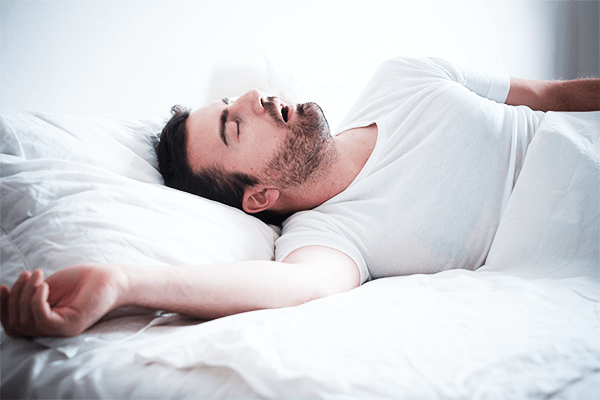Sleep apnea is a sleep disorder that involves breathing pauses and shallow breathing during sleep. The pause in breathing is called apnea and it can last for several seconds to minutes, with five episodes per hour expected to happen.
Hypopnea is the term used for each abnormally shallow breathing while sleep apnea is also classified as a dyssomnia. The pause in breathing leads to the accumulation of carbon dioxide in the bloodstream, which is detected by the chemoreceptors in the bloodstream. This signals the brain to wake the sleeping person to breathe air, which allows restoration of blood oxygen levels and lets the person fall asleep again.
Sleep apnea has three main types – obstructive sleep apnea, central sleep apnea, and complex sleep apnea syndrome. According to Mayo Clinic, obstructive sleep apnea is the most common form of the sleep disorder and it happens during the relaxation of the throat muscles. On the other hand, central sleep apnea happens when the brain is incapble of sending proper signals to the breathing muscles. Then, complex sleep apnea syndrome, which is also known as treatment-emergent central sleep apnea, happens when a person has both obstructive and central sleep apnea.
While sleep apnea comes in different forms, it is viewed as a serious sleep disorder due to the repetitive stopping of breathing. According to Somno Med, there is an increasing evidence that untreated sleep apnea has a significant impact on one’s health. The sleep disorder can lead to having high blood pressure due to the fluctuation of the hormonal systems and the low levels of oxygen in the blood. It is noted, however, that the treatment for sleep apnea helps people cut the list of medications they need to take for blood pressure.
People with sleep apnea are also candidates for heart disease or heart attack, which may lead to sudden death while sleeping in the middle of the night. The low oxygen levels cause atrial fibrillation and stroke, since the oxygenation in the brain is impaired. Aimed at preventing the negative cardiovascular impacts of sleep apnea, clinical trials have shown that the use of continuous positive airway pressure (CPA) or a SomnoDent oral device cuts down the risk of having a heart disease, similar to that of people without sleep apnea.
Sleep apnea is also common in people who are overweight or obese. It is because the extra weight around the neck makes it harder for them so breathe at night. It is important for the person’s spouse or relatives to refer the person to a sleep specialist for proper assessment, evaluation, and treatment. Being overweight or obese is a risk factor for having type 2 diabetes, linking it to sleep apnea. Also, sleep deprivation can lead to insulin resistance, which is a precursor to diabetes.
Acid reflux or gastroesophageal reflux disease is a common event in people who have sleep apnea. This is reportedly due to the interrupted action of the throat muscle during sleep, which is believed to have changes in pressure and suck the stomach contents back to the esophagus.
Sleep apnea is also linked to insomnia secondary to low oxygen levels in the body. As a result, people with the sleep disorder may complain about waking up with a headache. Also, snoring may disrupt the sleep of the person’s relatives, leading to lack of sleep and possible headache.
Treatment goals for sleep apnea include weight management, nutrition, sleeping positions, and avoiding alcohol and cigarettes, among others. For those who have constant snoring, they should be referred to a physician or sleep specialist.













